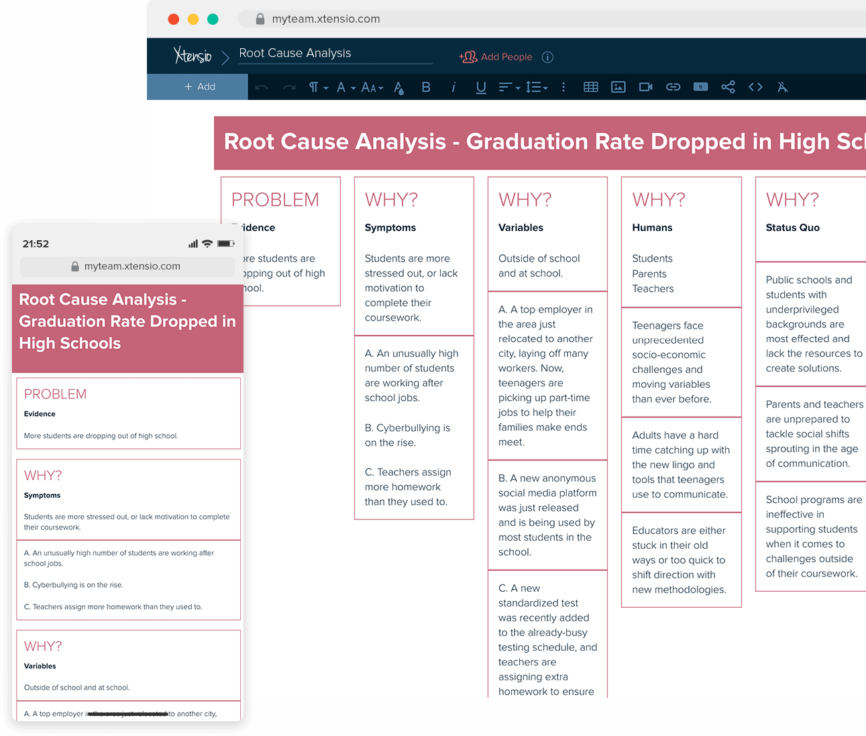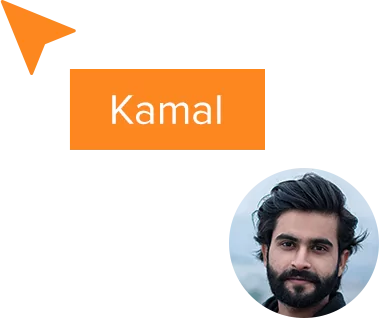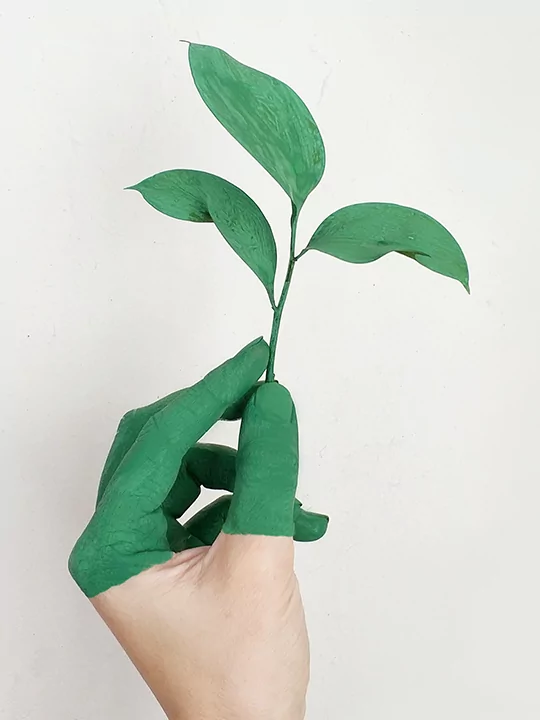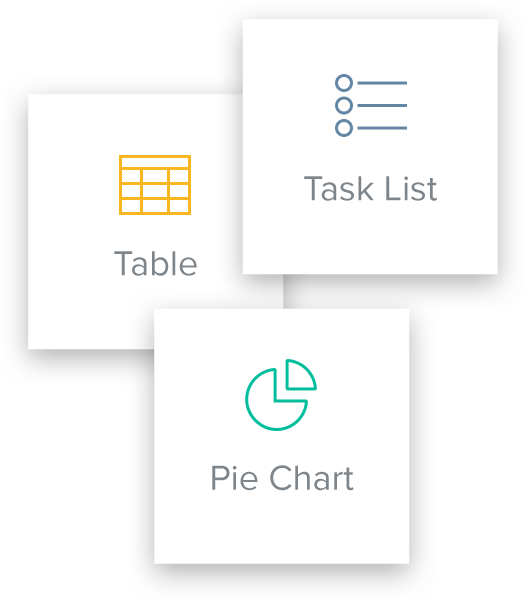How To Do Root Cause Analysis
Updated by Xtensio
Root cause analysis (RCA) is a method to identify the root causes of a problem, a defect, or a roadblock. It’s no longer enough to ask “What problem am I trying to solve?” Now we need to ask “What is causing this problem?” We need to peel back the layers and attempt to prevent the problem from happening in the first place. Explore this template.
Xtensio is your team space for beautiful living documents.
Create, manage and share business collateral, easily.

by Makaela Kingsley
Director of the Patricelli Center for Social Entrepreneurship,
Wesleyan University
Table of Contents
Identify the root causes of a problem, a defect, or a roadblock.

When an entrepreneur pitches an idea, the first question asked is “What problem are you solving?” In order to gain traction, a product or service must fill a need for its customers.
In social entrepreneurship or “change-making” work, the rule is the same: any new idea must address a documented need and have a strong logic model behind it.
Consider this case: A group of student leaders in a high school approach their principal to express concern about the growing levels of stress and anxiety among their peers. They pitch an idea for a mindfulness workshop series — a weekly gathering for students to learn relaxation techniques and coping skills. They ask for funding to reserve space, order snacks, and hire a trained facilitator.
These entrepreneurial students deserve credit for recognizing a problem and designing a solution that directly addresses it. Unfortunately, however, the problem-solution fit is not enough. In order to be successful, a root cause analysis is necessary before investing in any particular solution.
It’s no longer enough to ask “What problem am I trying to solve?” Now we need to ask “What is causing this problem?” We need to peel back the layers of the onion and attempt to prevent the problem from happening in the first place.
In the case of the stressed-out high school students, here are some possible causes:
1. They have more homework than they used to.
2. An unusually high number of students are working after-school jobs.
3. Cyberbullying is on the rise.
And likewise, for each of these, there are deeper explanations:
1. A new standardized test was recently added to the already-busy testing schedule, and teachers are assigning extra homework to ensure their students are prepared.
2. A top employer in the area just relocated to another city, laying off many workers. Now, teenagers are picking up part-time jobs to help their families make ends meet.
3. A new anonymous social media platform was just released and is being used by most students in the school.

As you can imagine, these roots grow deep, and for each cause, there are inevitably sub-causes.
Understanding this complexity doesn’t mean the problem will be easier to solve — but it does mean that innovators will have a better chance of mitigating harm rather than just putting band-aids on symptoms
These principles translate to any kind of business — not only social impact work.
Give it a try!
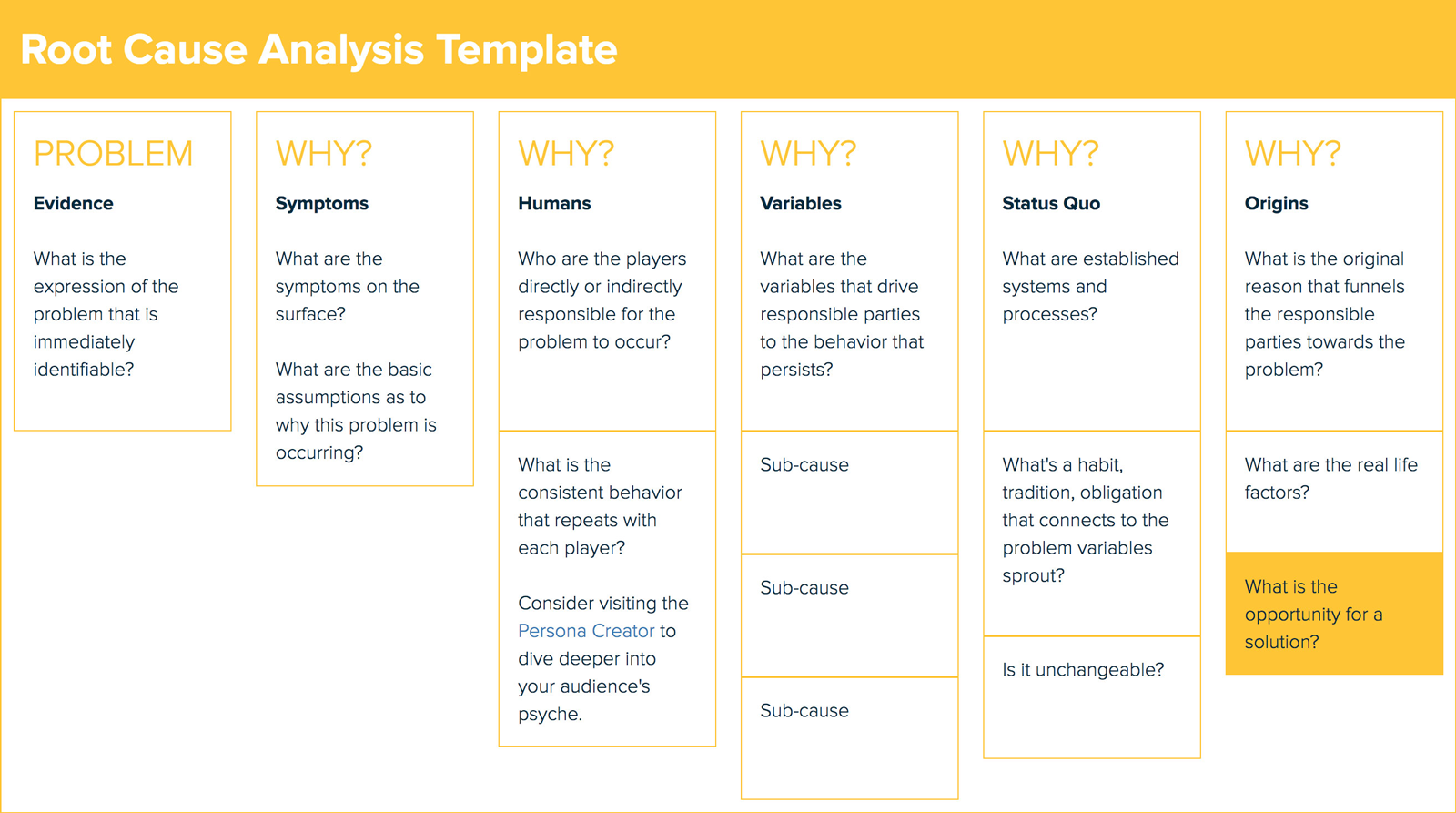
Above is Xtensio’s free editable and interactive template to create a Root Cause Analysis.
Start by naming a symptom, or evidence that there is a problem.
For example, our company’s net revenue has gone down.
Then think about the basic reason; ask why this is occurring.
Sales remain high, but profit margins have gone down.
Ask why again.
We lowered our prices in order to compete with a new company in the area.
Or, the cost of our raw materials has risen.
You guessed it: ask why again.
We assumed we’d have to compete for the same customers.
Global energy prices are up.

Continue asking why until you’ve uncovered insights that weren’t apparent to you before. Follow different “roots” to discover alternate possibilities. Investigate both deeply and widely to ensure that you have a handle on the complexity of the problem and its interrelated causes.
Then — and only then — should you begin thinking about solutions. Find innovations at strategic points along the roots that seem most fixable. Identify the levers that will use your available resources in the most effective ways.
By using this strategy, our stressed-out high schoolers might decide to lobby the principal to reschedule one of the standardized tests, so students can manage their homework loads more evenly. And the company with decreased revenue may decide to raise prices and market to a new customer segment that seeks higher-end merchandise. In both cases, the innovation addresses the root cause of the problem, not just a symptom.
Now, it’s your turn. What problem are you seeking to address? Why does this problem exist?
About the author
Makaela Kingsley is the director of the Patricelli Center for Social Entrepreneurship at Wesleyan University in Middletown, Connecticut. She teaches project-based, experiential-learning courses for student entrepreneurs, intrapreneurs, and changemakers. A 1998 graduate of Wesleyan, Makaela previously held positions in Wesleyan’s advancement division focused on alumni relations, volunteer management, and event planning. She began her career at the Planned Parenthood League of Massachusetts where she worked in development and public relations. Outside of the Patricelli Center, Makaela volunteers on the Advisory Board of Open Communities Alliance, as a Coach for AshokaU’s Commons, as a mentor for the Yale Entrepreneurial Institute, and as a judge for Echoing Green. She lives in Hamden, CT, with her husband and two children.

Design, manage and share beautiful living documents… easily, together. Explore Xtensio
- Click and edit anything… together.
- Customize to match your branding.
- Share with a link, present, embed or download.
